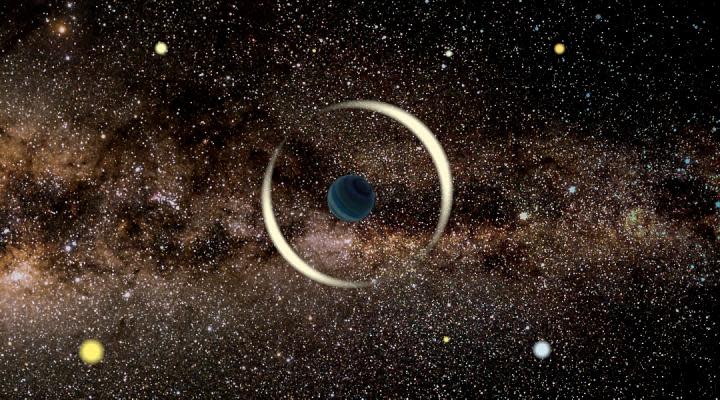Astronomers spot Mars-sized 'rogue planet' without a parent star

There might be billions of “rogue planets” hurtling through our galaxy on their own, orbiting no parent star, researchers have said.
Polish researchers spotted a brief brightening of a star, caused, they believe, by a Mars-sized planet wandering in front of another star.
The planet is thought to be a “rogue”, or not bound by gravity to a star, and slightly smaller than Earth.
Our galaxy could be full of such planets, according to the Ogle team from the Astronomical Observatory of the University of Warsaw.
Read more: Mysterious ‘rogue planet’ could be even weirder than we thought
Researcher Dr Przemek Mroz of the California Institute of Technology told Live Science: "The odds of detecting such a low-mass object are extremely low.”
"Either we were very lucky, or such objects are very common in the Milky Way. They may be as common as stars."
The researchers spotted the star due to a phenomenon known as “microlensing”, where a massive object (like a planet) bends the light from a star behind it, due to Einstein's theory of general relativity.
Mroz said: “If a massive object (a star or a planet) passes between an Earth-based observer and a distant source star, its gravity may deflect and focus light from the source. The observer will measure a short brightening of the source star.”
“Chances of observing microlensing are extremely slim because three objects – source, lens, and observer – must be nearly perfectly aligned.
“If we observed only one source star, we would have to wait almost a million years to see the source being microlensed.”
Read more: There might once have been life on the moon
The researchers believe the event was caused by a planet smaller than Earth, and possibly around the size of Mars.
The new event, called OGLE-2016-BLG-1928, had a timescale of just 42 minutes.
Dr Radoslaw Poleski from the Astronomical Observatory of the University of Warsaw said: “When we first spotted this event, it was clear that it must have been caused by an extremely tiny object.
“Indeed, models of the event indicate that the lens must have been less massive than Earth – it was probably a Mars-mass object.”
Read more: Exoplanet twice the size of Earth ‘could be habitable’
New surveys hunting for gravitational microlensing events are monitoring hundreds of millions of stars in the Milky Way centre, where the chances of microlensing are highest.
The Ogle survey – led by Warsaw University astronomers – is one of the largest and longest sky surveys. It started operations over 28 years ago.
Currently, Ogle astronomers are using a 1.3-meter Warsaw Telescope located at Las Campanas Observatory, Chile.
Watch: The future of America’s space race

 Yahoo Finance
Yahoo Finance 
